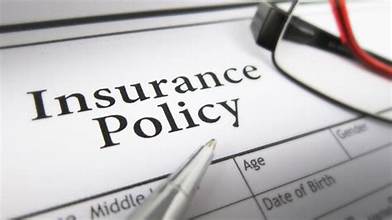Insurance plays a vital role in securing one’s financial future by providing protection against unexpected events and uncertainties. When it comes to choosing an insurance policy, there are various options available, each with its own set of benefits and drawbacks. In this guide, we’ll explore the benefits of different policy options, including term life insurance, whole life insurance, and universal life insurance, to help you make an informed decision about your insurance needs.
Introduction to Insurance and Its Importance
Insurance is a financial product designed to provide protection against specific risks in exchange for a premium payment. It serves as a safety net, helping individuals and families mitigate the financial consequences of events such as illness, accidents, or death. By transferring the risk to an insurance company, individuals can protect their assets and ensure financial stability for themselves and their loved ones.
Term Life Insurance
Definition and Features
Term life insurance provides coverage for a specified period, typically ranging from 10 to 30 years. If the policyholder passes away during the term, the insurance company pays a death benefit to the beneficiaries. Term life insurance is known for its affordability and simplicity, making it an attractive option for individuals seeking basic coverage for a specific period.
Benefits and Drawbacks
One of the main benefits of term life insurance is its affordability, especially for younger individuals or those in good health. Additionally, term policies offer flexibility, allowing policyholders to choose the coverage amount and term length that best suit their needs. However, term life insurance does not build cash value and expires at the end of the term, potentially leaving policyholders without coverage if they outlive the term or become uninsurable due to health issues.
Whole Life Insurance
Definition and Features
Whole life insurance provides lifelong coverage and includes a cash value component that grows over time. Premiums remain fixed for the duration of the policy, and the policyholder can access the cash value through withdrawals or loans. Whole life insurance offers stability and guarantees, making it a popular choice for individuals seeking permanent coverage and asset accumulation.
Benefits and Drawbacks
One of the primary benefits of whole life insurance is its permanence, ensuring that policyholders have coverage for their entire lives as long as premiums are paid. Additionally, whole life policies accumulate cash value over time, which can be used for various purposes, such as supplementing retirement income or covering unexpected expenses. However, whole life insurance tends to be more expensive than term life insurance, and the cash value growth may be slow compared to other investment options.
Universal Life Insurance
Definition and Features
Universal life insurance is a flexible permanent life insurance policy that offers both death benefit protection and a cash value component. Policyholders have the flexibility to adjust their premiums and death benefits to suit their changing needs and circumstances. Universal life insurance provides the opportunity for cash value growth through investment options offered by the insurance company.
Benefits and Drawbacks
Universal life insurance offers flexibility and customization, allowing policyholders to tailor their coverage to their individual financial goals and risk tolerance. The cash value component has the potential for growth, and policyholders can access the cash value through withdrawals or loans. However, universal life insurance policies can be complex, with variable premiums and investment risks. Additionally, policyholders bear the responsibility of managing their policy’s investment component, which requires careful monitoring and decision-making.
Factors to Consider When Choosing a Policy
Financial Goals and Needs
When selecting an insurance policy, consider your financial goals and needs, both now and in the future. Determine the amount of coverage you require to protect your loved ones and achieve your long-term financial objectives.
Budgetary Constraints
Evaluate your budget and determine how much you can afford to spend on insurance premiums. Compare the costs of different policy options and choose one that fits within your budgetary constraints without compromising on coverage.
Risk Tolerance
Assess your risk tolerance and comfort level with different types of insurance policies. Consider factors such as your age, health status, and financial obligations to determine the level of risk you are willing to accept and choose a policy accordingly.
Conclusion
Choosing the right insurance policy is essential for securing your financial future and protecting your loved ones against life’s uncertainties. By exploring the benefits of different policy options, including term life insurance, whole life insurance, and universal life insurance, you can make an informed decision that meets your needs and aligns with your financial goals.

